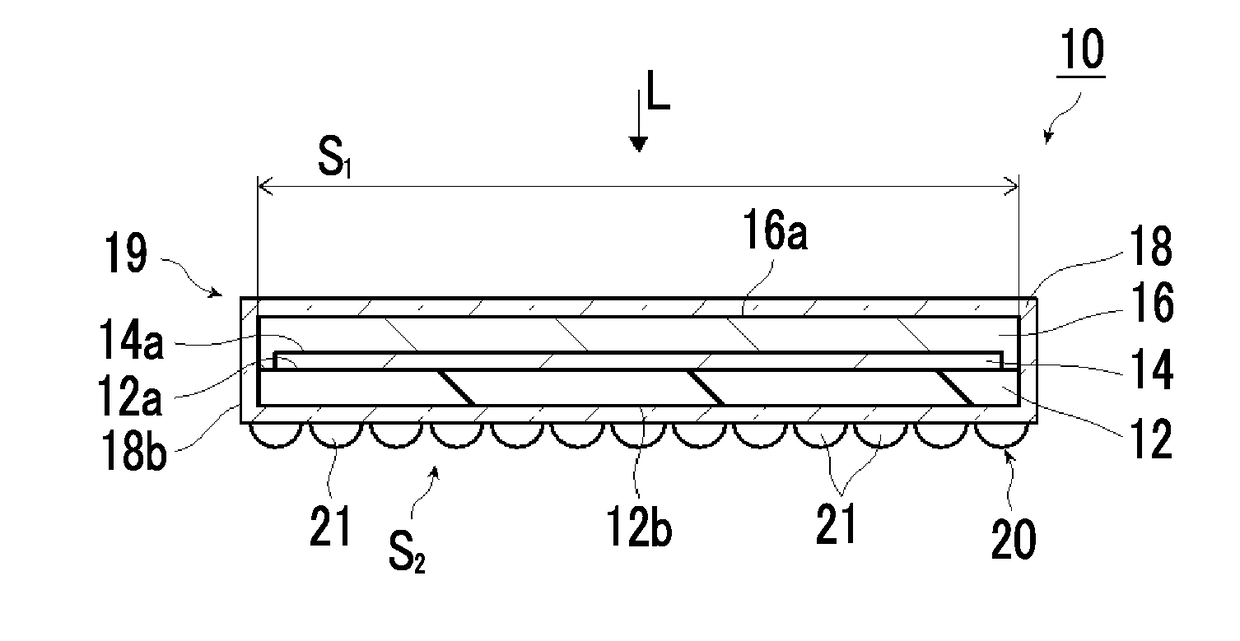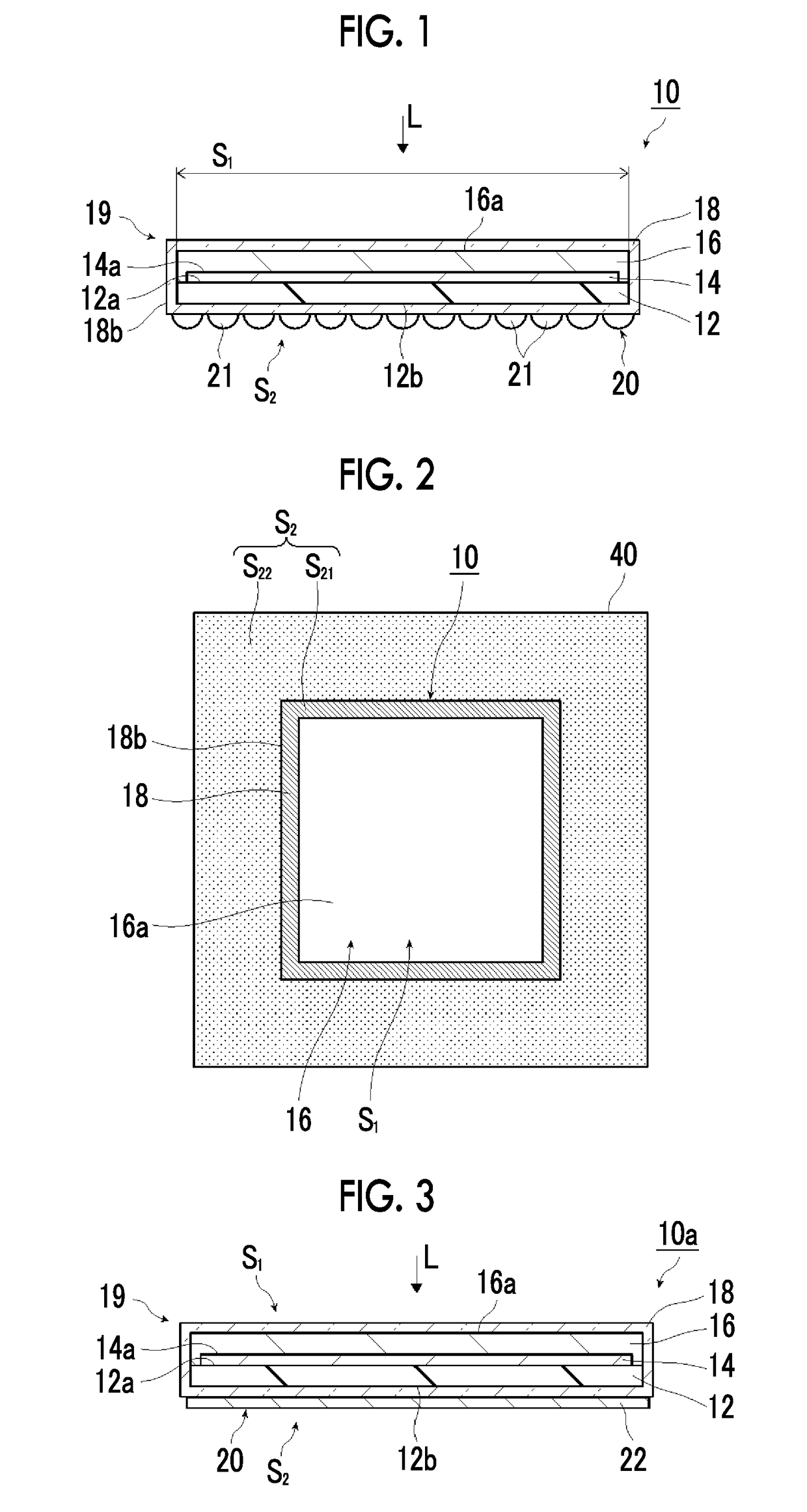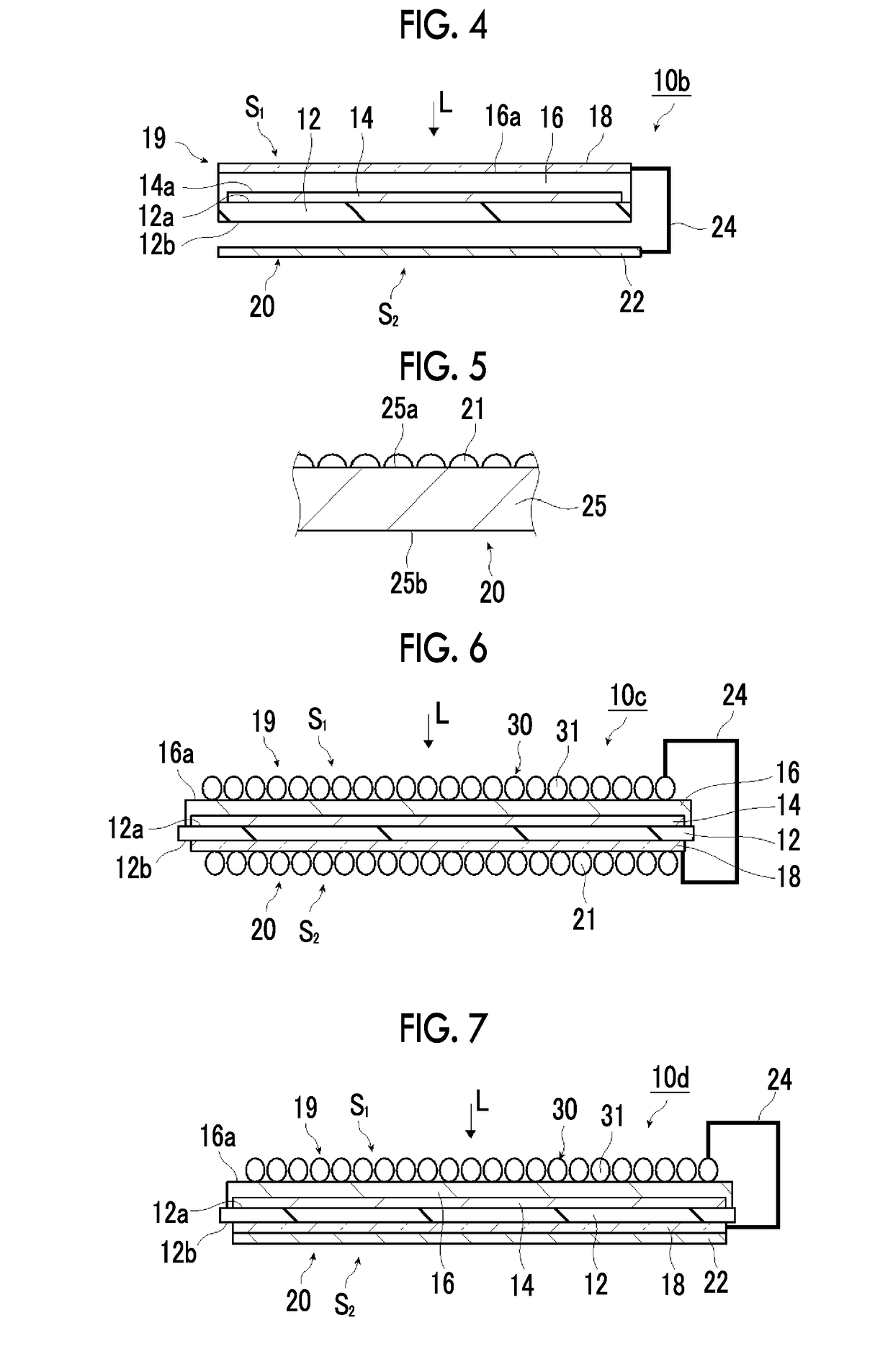Photocatalyst electrode and artificial photosynthesis module
a photocatalyst and electrode technology, applied in the direction of electrolysis components, catalyst activation/preparation, physical/chemical process catalysts, etc., can solve the problems of limited reaction field and difficult to make the reaction efficiency per installation area of the electrode for optical water decomposition high, and achieve high reaction efficiency and stably generating gas over a long period of time.
- Summary
- Abstract
- Description
- Claims
- Application Information
AI Technical Summary
Benefits of technology
Problems solved by technology
Method used
Image
Examples
example 1
[0197]A soda lime glass substrate having a thickness of 1 mm was prepared as a substrate, and a molybdenum film having a thickness of 500 nm was formed on a surface of this soda lime glass substrate by the sputtering method to obtain a conductive layer. Next, a CIGS layer having a thickness of 1500 nm was formed as a p-type semiconductor layer on the conductive layer. Next, a CdS layer having a thickness of 50 nm was formed as an n-type semiconductor layer on the p-type semiconductor layer by the chemical bath deposition (CBD) method. A photocatalyst layer was formed of the p-type semiconductor layer and the n-type semiconductor layer. Hereinafter, the substrate in this state is referred to as a CIGS substrate. The CIGS substrate was cut into 1 cm×1 cm.
[0198]Next, Pt particles were made to be carried and supported with a set film thickness of 2 nm on the n-type semiconductor layer by the sputtering method to obtain an island-like second co-catalyst. Next, an indium tin oxide (ITO) l...
example 2
[0202]Since Example 2 is different from Example 1 in that a Pt film having a thickness of 50 nm was made as the first co-catalysts by the sputtering method, the second co-catalyst and the Pt film were electrically connected to each other with the conducting wire, the conducting wire was fixed using the conductive adhesive containing silver paste, was covered with the epoxy resin, and was electrically insulated from each other, and is the same as Example 1 excluding these, the detailed description thereof will be omitted.
[0203]In addition, the configuration of Example 2 is the same configuration as the photocatalyst electrode 10d illustrated in FIG. 7.
example 3
[0204]Since Example 3 is different from Example 1 in that a Pt mesh having an area 3 times greater than the area of the p-type semiconductor layer, that is, the photocatalyst layer was used as the first co-catalysts by the sputtering method, the second co-catalyst and the Pt mesh were electrically connected to each other with the conducting wire, the conducting wire was fixed using the conductive adhesive containing silver paste, was covered with the epoxy resin, and was electrically insulated from each other, and is the same as Example 1 excluding these, the detailed description thereof will be omitted. The installation area of Example 3 where a co-catalyst is provided is 4 times greater than the area of the photocatalyst layer.
[0205]In addition, the configuration of Example 3 is the same configuration as the photocatalyst electrode 10e illustrated in FIG. 8. A platinum mesh electrode that is made by EC Frontier CO., LTD. and has 80 meshes was used for the Pt mesh.
PUM
| Property | Measurement | Unit |
|---|---|---|
| light transmittance | aaaaa | aaaaa |
| light transmittance | aaaaa | aaaaa |
| light transmittance | aaaaa | aaaaa |
Abstract
Description
Claims
Application Information
 Login to View More
Login to View More - R&D
- Intellectual Property
- Life Sciences
- Materials
- Tech Scout
- Unparalleled Data Quality
- Higher Quality Content
- 60% Fewer Hallucinations
Browse by: Latest US Patents, China's latest patents, Technical Efficacy Thesaurus, Application Domain, Technology Topic, Popular Technical Reports.
© 2025 PatSnap. All rights reserved.Legal|Privacy policy|Modern Slavery Act Transparency Statement|Sitemap|About US| Contact US: help@patsnap.com



